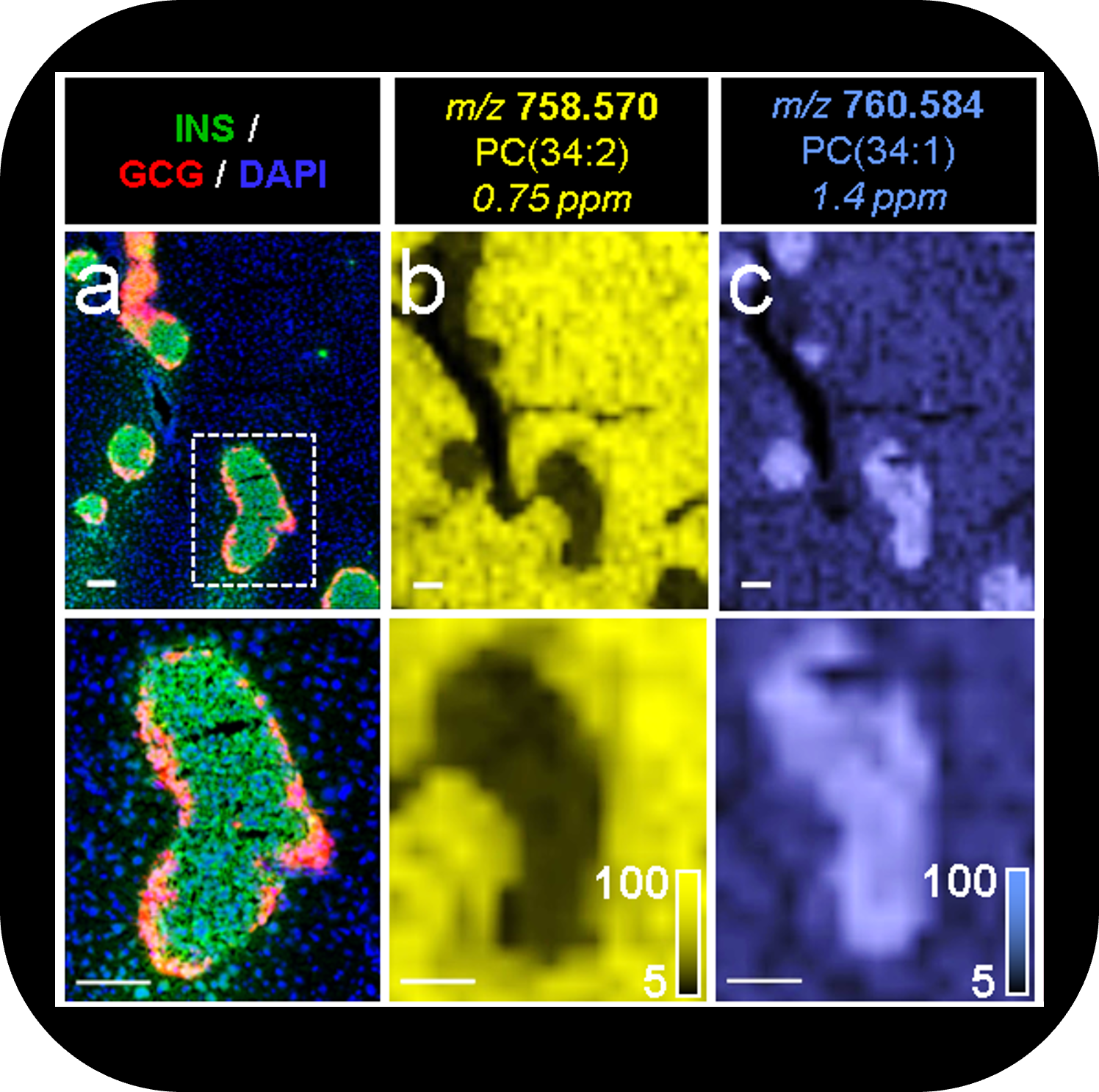Profound cell signaling alterations are known to occur in altered metabolic states such as type 1 diabetes (T1D). In the pancreas, the sequence of events involved in glucose-stimulated insulin secretion can be disrupted at many different molecular points along its biological pathway. Most tissue-based imaging modalities used to date have focused on genetic or protein signatures of T1D dysfunction. However, it is the metabolites that are directly interacting with and modulating the collective “-omic” levels, including gene expression, RNA metabolism, protein activity, and metabolic activity. Additionally, the metabolome is increasingly recognized as a more dynamic and sensitive measure of an organism’s phenotype. In contrast to classical antibody-based fluorescence imaging modalities, imaging mass spectrometry is a label-free imaging technology that allows for the multiplexed and facile discrimination of hundreds of individual metabolites. Detecting the endocrine/exocrine partitioning and diversity of metabolites directly in pancreatic tissue, before these metabolites have been diluted in the bloodstream, promises an unprecedented view of T1D metabolism.

Collaborators
Dr. Clive Wasserfall, UF Department of Pathology – Wasserfall Research
Dr. Mark Atkinson, UF Diabetes Institute – Atkinson Lab
Current Funding: JDRF Innovation Grant
